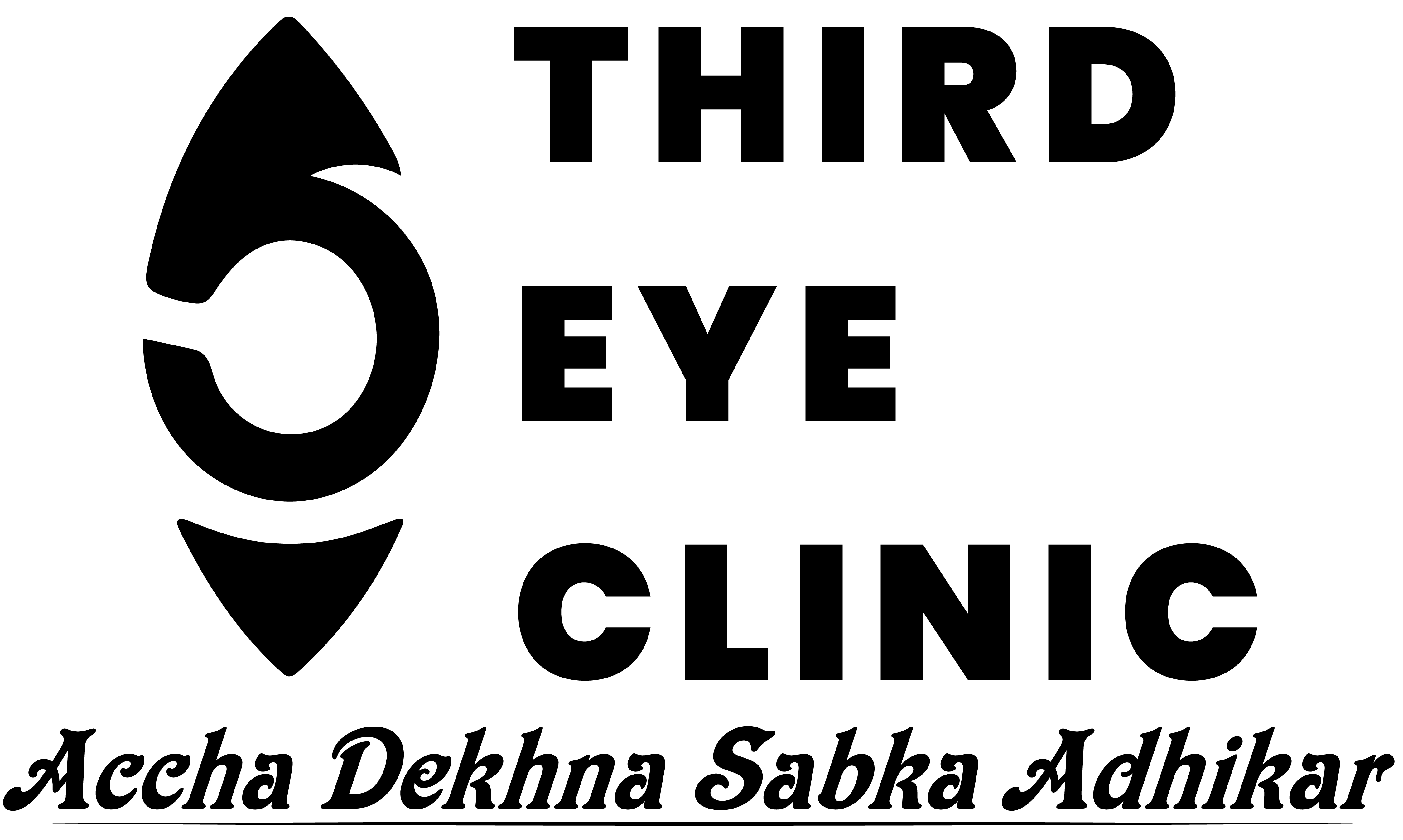Cornea
Cornea and Associated Diseases
The cornea is the transparent front part of the eye that covers the iris, pupil, and anterior parts of an eye. The cornea is composed of specialized cells and proteins and lacks blood vessels to maintain transparency. The conditions that affect the cornea are called corneal diseases.
The Cornea Clinic at Third Eye Clinic is committed to the specialized care of corneal diseases and disorders. The cornea, the clear, outermost layer of the eye, plays a vital role in focusing vision. Even minor damage or infection can affect sight significantly. That’s why our expert team uses the latest diagnostic tools and surgical techniques to preserve and restore corneal health.
Our Cornea Clinic Services Include:
- Comprehensive Corneal Evaluation
Detailed eye exams, corneal topography, and pachymetry for precise diagnosis. - Treatment of Corneal Infections
Medical management of bacterial, viral, fungal, and parasitic infections. - Keratoconus Diagnosis & Management
Cross-linking, specialty contact lenses, and surgical interventions for thinning cornea. - Corneal Transplant (Keratoplasty)
Full-thickness and partial-thickness corneal transplant surgeries performed by corneal specialists. - Management of Corneal Injuries & Scars
Care for trauma, burns, and chemical injuries affecting corneal clarity. - Dry Eye & Ocular Surface Disorders
Diagnosis and customized treatment plans for dry eye syndrome and surface damage.
Common Causes of Corneal Problems
Symptoms of cataracts include:
- Infections (bacterial, viral like Herpes Simplex, fungal, acanthamoeba)
- Eye injuries or foreign bodies
- Prolonged contact lens use
- Autoimmune diseases (e.g., Sjögren’s syndrome)
- Keratoconus (progressive thinning of the cornea)
- UV exposure or chemical burns
- Previous eye surgeries or trauma
At first, the cloudiness in your vision caused by a cataract may affect only a small part of the eye’s lens. You may not notice any vision loss. As the cataract grows larger, it clouds more of your lens. More clouding changes the light passing through the lens. This may lead to symptoms you notice more.
Cause
Most cataracts develop when aging or injury changes the tissue that makes up the eye’s lens. Proteins and fibers in the lens begin to break down. This causes vision to become hazy or cloudy.
Some disorders passed down from parents that cause other health problems can increase your risk of cataracts. Cataracts also can be caused by other eye conditions, past eye surgery or medical conditions such as diabetes. Long-term use of steroid medicines also may cause cataracts to develop.
Prevention
No studies have proved how to prevent or slow the growth of cataracts. But health care professionals think several strategies may be helpful, including:
Follow your treatment plan if you have diabetes or other medical conditions that can increase your risk of cataracts.
Why Choose Us?
Are you having Eye problems? Contact us today!
Address Business
Contact With Us
Call Us 24/7: +91 7903381944
Working Time
The cornea is the transparent, dome-shaped outermost layer of the eye that covers the iris and pupil. It helps focus light into the eye and plays a vital role in vision clarity.
Our Cornea Clinic provides diagnosis and treatment for:
- Corneal infections (Keratitis)
- Corneal ulcers
- Dry Eye Syndrome
- Keratoconus
- Corneal dystrophies
- Pterygium
- Corneal scars or injuries
- Bullous keratopathy
Common symptoms include:
- Eye redness
- Pain or irritation
- Blurred vision
- Excessive tearing
- Sensitivity to light
- Decreased vision
- Foreign body sensation
Diagnosis is done through:
- Slit-lamp examination
- Corneal staining
- Corneal scraping for laboratory testing (culture & sensitivity)
- Imaging tests if required
Treatment depends on the diagnosis and may include:
- Antibiotic/antiviral/antifungal eye drops
- Anti-inflammatory medications
- Lubricating drops and ointments
- Corneal collagen cross-linking (C3R) for keratoconus
- Laser treatments
- Corneal transplantation (in severe cases)
Keratoconus is a condition where the cornea thins and bulges into a cone shape, distorting vision. It can be managed with:
- Spectacles or rigid contact lenses
- Corneal collagen cross-linking (C3R)
- Intacs implants or corneal transplant (in advanced cases)
A corneal transplant (keratoplasty) is a surgical procedure where a damaged or diseased cornea is replaced with a healthy donor cornea. It is done in cases where vision cannot be restored with medication or minor procedures.
- Maintain proper hygiene, especially when using contact lenses
- Avoid touching or rubbing eyes with unclean hands
- Wear protective eyewear in dusty or injury-prone environments
- Seek prompt treatment for eye redness or discomfort
Most corneal surgeries are performed under local anesthesia and are not painful. Post-operative discomfort, if any, is usually mild and temporary.
We offer:
- Advanced diagnostic tools
- Modern surgical and non-surgical treatments
- Experienced cornea specialists
- Personalized care and post-operative follow-up
- A dedicated Cornea & External Eye Disease unit



